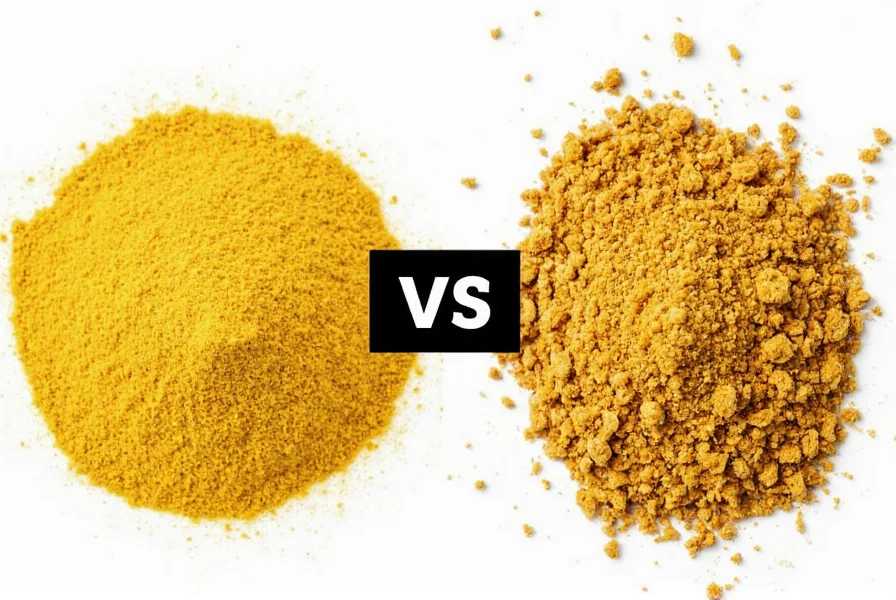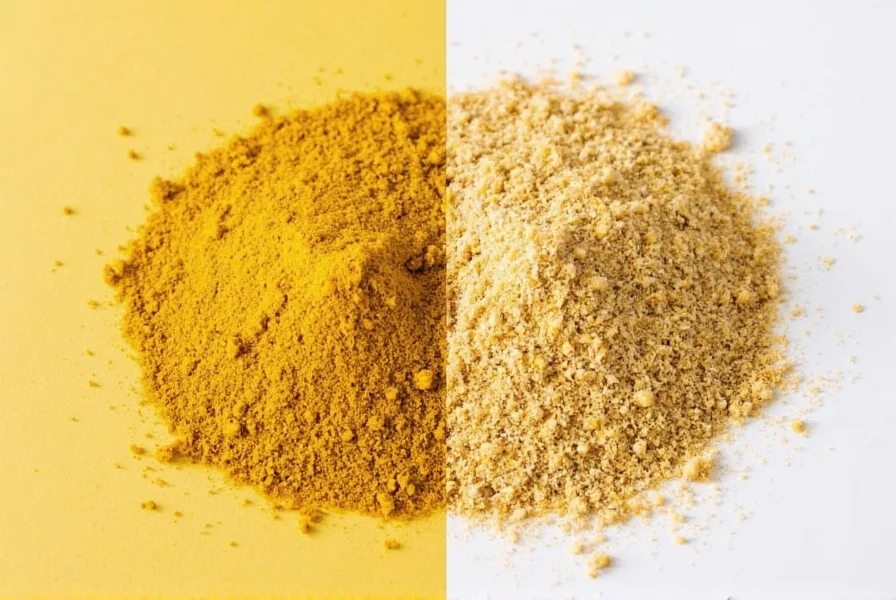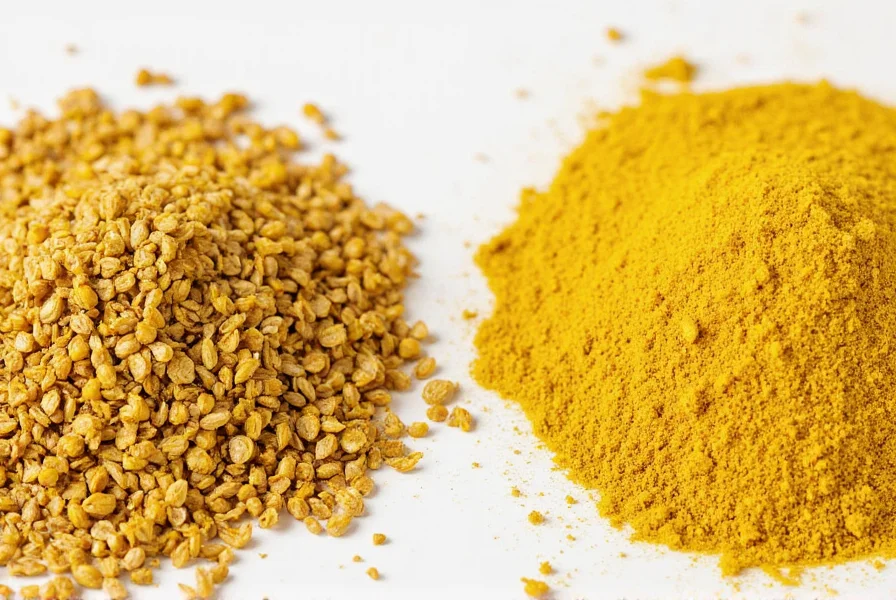When navigating recipe instructions, ingredient labels, or cooking discussions, you might encounter both dried mustard and ground mustard terminology. This common point of confusion stems from regional naming preferences rather than any actual difference in the product itself. Understanding this equivalence prevents unnecessary grocery store trips or recipe substitutions that could alter your dish's flavor profile.
Why Two Names for the Same Ingredient?
The dual terminology exists primarily due to historical and regional language preferences. In North American cooking circles, "dry mustard" appears more frequently in vintage recipes, while "ground mustard" has become the standard term in modern cookbooks and packaging. British and European sources often use "mustard powder" as the preferred designation.
Regardless of which term appears in your recipe, you're working with the same fundamental ingredient: finely milled mustard seeds that haven't been combined with liquid to create prepared mustard. This dry form offers distinct advantages for certain culinary applications compared to its ready-to-use counterpart.
Practical Cooking Implications
When a recipe calls for dried or ground mustard, it's specifically requesting the powdered form for these critical reasons:
- Controlled flavor activation—Mustard powder only develops its characteristic pungency when mixed with liquid, allowing precise timing in recipe execution
- Extended shelf stability—The dry form maintains potency significantly longer than prepared mustard
- Texture integration—Powdered mustard dissolves completely into sauces and dressings without graininess
- Flavor concentration—Provides more intense mustard flavor per volume compared to prepared versions
| Term Used | Common Regions | Typical Recipe Appearance |
|---|---|---|
| Dried Mustard | North America (historical) | Vintage cookbooks, older recipes |
| Ground Mustard | Global (modern standard) | Contemporary cookbooks, packaging |
| Mustard Powder | UK, Europe | International recipes |
Dried Mustard vs. Prepared Mustard: Critical Distinction
While dried and ground mustard are identical, it's crucial to distinguish both from prepared mustard—the familiar yellow condiment in your refrigerator. This confusion causes the most frequent substitution errors in home cooking.
When substituting between dry and prepared forms, use this reliable conversion:
- 1 teaspoon dried/ground mustard = 1 tablespoon prepared mustard
- Reduce other liquids in recipe by 1 tablespoon when making substitution
Attempting to use prepared mustard when a recipe specifies dried/ground mustard often results in:
- Excess liquid altering recipe chemistry (particularly problematic in baking)
- Diluted flavor profile
- Unexpected texture issues
- Potential curdling in dairy-based sauces

Optimal Storage Practices for Maximum Potency
To maintain the vibrant flavor and enzymatic activity of your dried mustard powder:
- Store in an airtight container away from light and heat
- Keep away from strong-smelling spices (mustard readily absorbs odors)
- Use within 6-12 months for peak potency (though safe indefinitely)
- Test potency by mixing ¼ teaspoon with warm water—if no heat develops within 10 minutes, replace
Unlike many spices that merely lose flavor over time, expired mustard powder undergoes chemical changes that can produce bitter, off-flavors in your dishes. Proper storage preserves the myrosinase enzyme responsible for creating mustard's signature heat when activated with liquid.
Signature Applications in Culinary Traditions
Chefs and home cooks leverage dried mustard's unique properties in these classic applications:
- Barbecue dry rubs—Provides background heat without moisture that would prevent proper searing
- Cheese sauces—Acts as emulsifier while adding subtle tang (essential in Welsh rarebit)
- Marinades for fatty meats—The enzymes help break down connective tissues
- Classic salad dressings—Creates stable emulsions in vinaigrettes
- Baking applications—Adds complexity to cheddar biscuits and pretzels
Professional kitchens often create custom mustard blends by combining ground mustard with complementary spices like turmeric, cayenne, or smoked paprika before incorporating into recipes—allowing precise flavor control impossible with prepared mustards.

Common Substitution Scenarios
When you find yourself without dried/ground mustard, these substitutions work in specific contexts:
- For immediate use: Mix 1 teaspoon mustard powder with 1 tablespoon cold water, let stand 10 minutes
- In dressings: Use 1 tablespoon prepared mustard (reduce other liquids accordingly)
- In baking: Replace with ½ teaspoon horseradish powder (different flavor profile but similar heat)
- Emergency substitution: Use ¼ teaspoon turmeric + pinch cayenne (primarily for color)
Remember that these substitutions work best when you understand why the recipe calls for dried mustard—whether for its enzymatic properties, flavor contribution, or textural role. This knowledge helps select the most appropriate alternative for your specific culinary application.
Frequently Asked Questions
Can I use ground mustard instead of dry mustard in recipes?
Yes, ground mustard and dry mustard are identical products with interchangeable usage. These terms refer to the same mustard seed powder, with 'dry mustard' appearing more frequently in older American recipes and 'ground mustard' being the modern standard term. You can substitute them measure for measure without adjusting other ingredients.
What's the difference between mustard powder and prepared mustard?
Mustard powder (also called dried or ground mustard) is pure ground mustard seeds with no liquid added, while prepared mustard contains vinegar, water, and other ingredients. The powder form remains dormant until mixed with liquid, allowing controlled flavor development in recipes. Prepared mustard cannot be substituted 1:1 for mustard powder without adjusting liquid content in your recipe.
How do I know if my dried mustard has gone bad?
Expired dried mustard loses its enzymatic activity and develops bitter flavors. Test potency by mixing ¼ teaspoon with warm water—if no heat develops within 10 minutes, it's lost effectiveness. Properly stored in an airtight container away from light, mustard powder maintains peak quality for 6-12 months though it remains safe indefinitely.
Why do some recipes specifically call for dried mustard instead of prepared?
Recipes specify dried mustard when they require controlled flavor activation, precise liquid measurement, or complete dissolution. The powder form allows mustard's heat to develop gradually during cooking, prevents excess moisture in sauces, and creates smoother textures in cheese sauces and dressings compared to prepared mustard.











 浙公网安备
33010002000092号
浙公网安备
33010002000092号 浙B2-20120091-4
浙B2-20120091-4